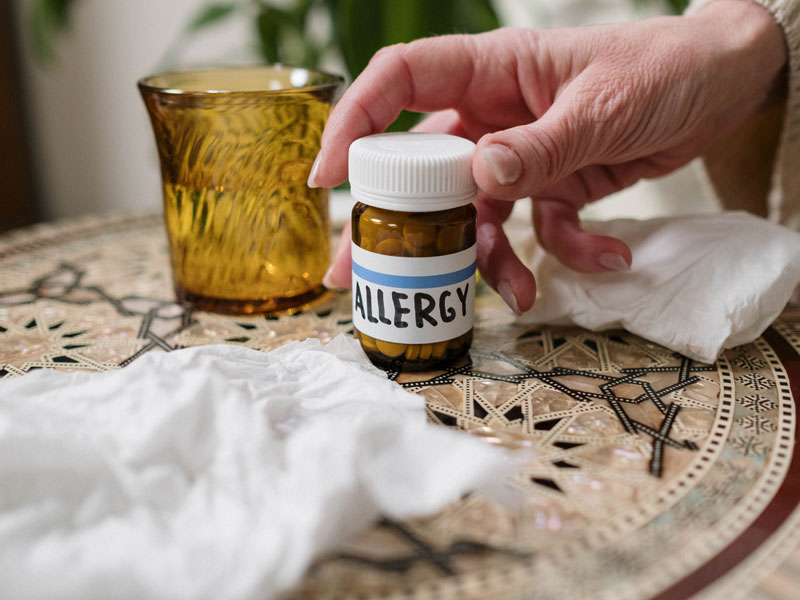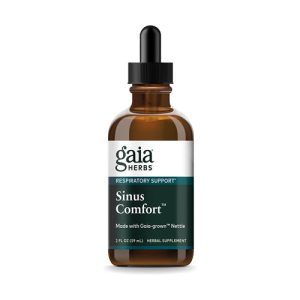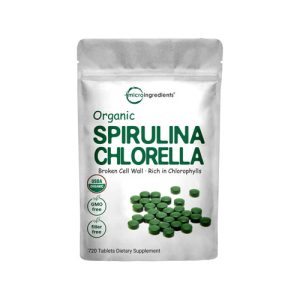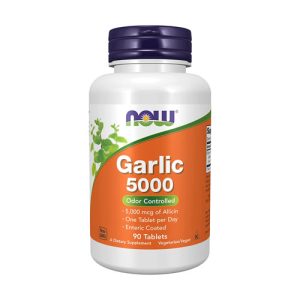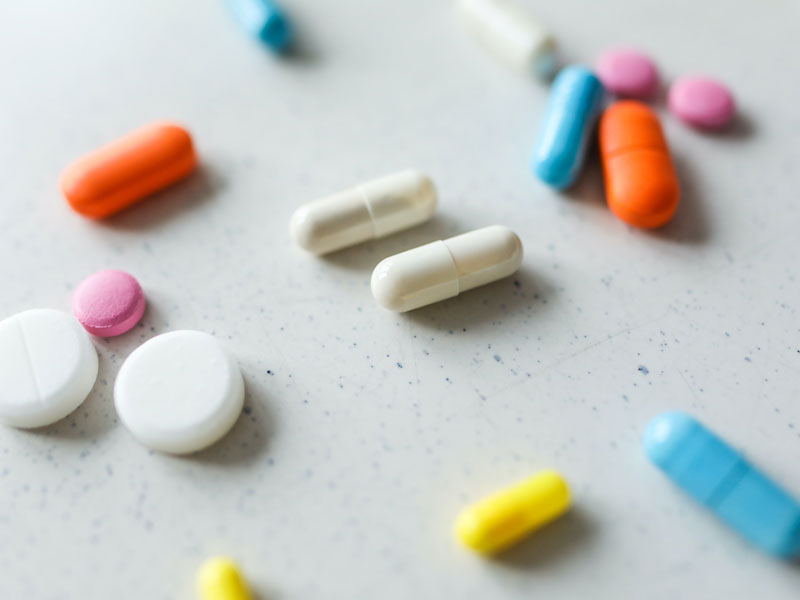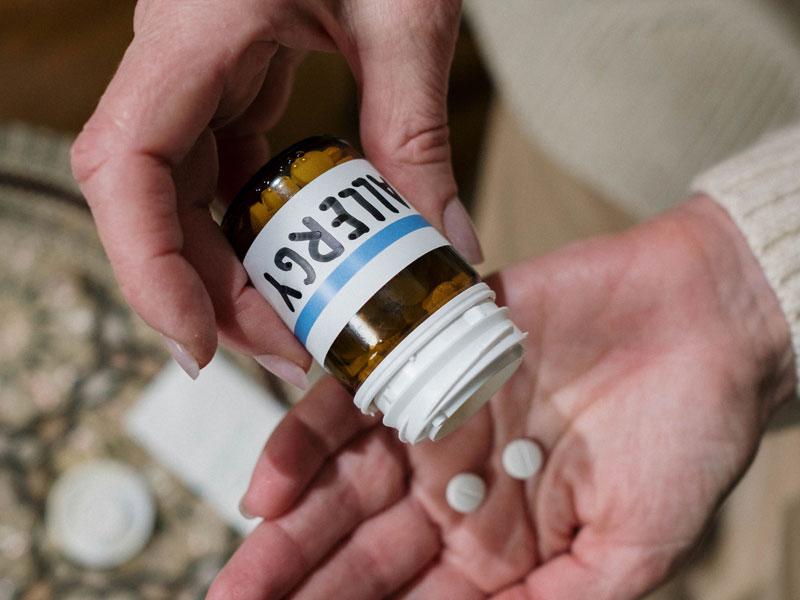
Below are my recommendations for supplements that may support your immune system during Covid. As a three-time Covid survivor, I have gained valuable insights into the virus and its effects on the body. By maintaining a strong immune system, I have been able to manage my symptoms at home and avoid hospitalization.
I highly recommend incorporating whole-food-based, natural, and raw supplements into your regimen. These supplements are easier for the body to digest and absorb compared to synthetic supplements, which may add extra stress on the liver and kidneys.
I would like to draw your attention to ASEA, which I have been taking for over a year. I have noticed that taking ASEA during Covid-19 has resulted in shorter recovery times and milder symptoms. I consumed a bottle of ASEA daily during my Covid-19 illness, allowing the redox molecules to support my cellular health.
The following supplements have supported my body during my Covid-19 illnesses and come with my highest recommendation.
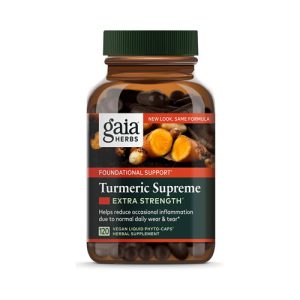 1. Turmeric — this is an anti-inflammatory, you should be taking this even without covid as it suppresses molecules that cause inflammation in our body. There have already been studies (meta-analysis) of the effects of Turmeric (curcumin) on covid-sars-2, below is one of the studies.
1. Turmeric — this is an anti-inflammatory, you should be taking this even without covid as it suppresses molecules that cause inflammation in our body. There have already been studies (meta-analysis) of the effects of Turmeric (curcumin) on covid-sars-2, below is one of the studies.
https://www.frontiersin.org/articles/10.3389/fphar.2021.675287/full#F2
Excerpts from the Study:
The SARS-CoV-2 S glycoprotein is responsible for the interaction between the virus and the host cell, promoting fusion and internalization of the virus via the ACE2 receptor. Thus, both the S glycoprotein and ACE2 are potential targets for the treatment of COVID-19. In silico analysis showed that curcumin has a high-affinity for interaction with the S glycoprotein through the establishment of six hydrogen bonds (Maurya et al., 2020). In this study, curcumin obtained higher scores than the control compounds, such as nafamostat and hydroxychloroquine (Maurya et al., 2020). In addition, curcumin displayed an affinity for ACE2. Moreover, docking results showed that curcumin interacted with the active site of the protein, in addition to forming two hydrogen bonds (Maurya et al., 2020). Similarly, curcumin demonstrated a better affinity for ACE2 than the control compounds, such as captopril and hydroxychloroquine (Maurya et al., 2020)
Potential curcumin targets as antiviral and anti-inflammatory in SARS-CoV-2 infection. The first antiviral effect of curcumin against SARS-CoV-2 is its potential for preventing the binding of viral S protein to the ACE2 receptor and initiate the host cell infection process (1). After penetrating the host cell via endosomes, the virus begins the replication process that requires an acid endosomal environment to initiate the proteolytic process of viral proteins and subsequent release to the external environment. Curcumin acts by inhibiting the Endosomal acidification (2) and processing of the viral proteins (Mpro), necessary for viral release (3,4). Further, the inhibition of ACE mediated by curcumin (5) prevents the increase of Ang II levels. Curcumin inhibits NF-κB (6) through the inhibition of different pathways.
Focusing on the anti-inflammatory action of curcumin, two studies were conducted with patients with COVID-19. In the first study, the research group investigated the modulation of pro-inflammatory cytokines by nanocurcumin. Patients with COVID-19 showed high mRNA expression and secretion of cytokines, IL-1β, IL-6, TNF-α, and IL-18, but showed a significant reduction in IL-6 and IL-1β after treatment with nanocurcumin (Valizadeh et al., 2020). Subsequently, exploring the modulatory mechanisms of nanocurcumin, the researchers demonstrated that the number of Th17 cells, gene expression, and serum Th17-mediated factors level (IL-17, IL-21, IL-23, and GM-CSF) were significantly reduced in both stages of the disease in the group of patients with COVID-19 treated with nanocurcumin (Tahmasebi et al., 2020).
Potential curcumin in cell damage caused by SARS-CoV-2 in the lung and heart. Curcumin promotes differentiation from naïve CD4+T-cell to Tregs through the modulation of IL-10 (1). The cytoprotective role of curcumin decreases the death of type II alveolar cells (ATII) with a consequent decrease in the release of DAMPs (2). Curcumin also mediates macrophages’ polarization, decreasing the population of inflammatory macrophages M1 to macrophages M2 that participate in the resolving and reparative process
Conclusion of Study
Due to the uncountable mechanisms of action addressed in this and other reviews, it has been reinforced that curcumin could serve as an adjuvant drug in COVID-19 treatment (Babaei et al., 2020; Manoharan et al., 2020; Roy et al., 2020; Soni et al., 2020; Zahedipour et al., 2020; Saeedi-Boroujeni et al., 2021; Thimmulappa et al., 2021). The multiplicity of pathophysiological responses induced by SARS-CoV-2 highlights the need for a combination of different drugs as a treatment strategy (i.e., there is no single “magic pill” for the cure of COVID-19). Curcumin is a well-tolerated natural compound in humans, even at high concentrations (Dhillon et al., 2008; Kanai et al., 2011; Gupta et al., 2013). Thus, its combination with drugs that are already approved for use appears logical. Curcumin is a well-tolerated natural compound in humans, even at high concentrations (Dhillon et al., 2008; Kanai et al., 2011; Gupta et al., 2013). Thus, its combination with drugs that are already approved for use appears logical. The first results from the studies regarding the effect of curcumin in patients with COVID-19 are promising.
There is only one brand of Tumeric that I recommend and its this: https://amzn.to/3JcdPbR
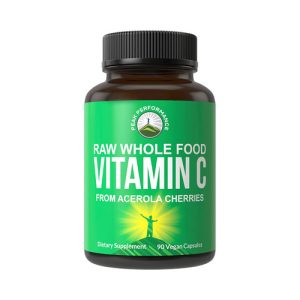 2. Vitamin C — I don’t prescribe to bottled vitamin C and eat fruits, high in vitamin C, daily. Even throughout covid, I would be eating fruits. My favorites are pomelo, mangoes, oranges, apples, blueberries — anything in season. Remember this: Your fruit will have a high concentration of vitamin C depending when it was picked so choose fruits that in season and were picked within the last week or so, if possible. Because its winter in the East coast now, there are no fruits with a high enough dose of vitamin C so this is the only time that Im supplementing with a whole food-based vitamin. If you read the ingredients list of the vitamin C that you are drinking and it says, “ascorbic acid” only — throw that away! Ascorbic acid is GMO-Corn and was synthetically manufactured in a lab. Most whole-based vitamins will have ingredients of fruits for vitamins.
2. Vitamin C — I don’t prescribe to bottled vitamin C and eat fruits, high in vitamin C, daily. Even throughout covid, I would be eating fruits. My favorites are pomelo, mangoes, oranges, apples, blueberries — anything in season. Remember this: Your fruit will have a high concentration of vitamin C depending when it was picked so choose fruits that in season and were picked within the last week or so, if possible. Because its winter in the East coast now, there are no fruits with a high enough dose of vitamin C so this is the only time that Im supplementing with a whole food-based vitamin. If you read the ingredients list of the vitamin C that you are drinking and it says, “ascorbic acid” only — throw that away! Ascorbic acid is GMO-Corn and was synthetically manufactured in a lab. Most whole-based vitamins will have ingredients of fruits for vitamins.
Here is a whole food-based vitamin C that I supplement with when I needed: https://amzn.to/3QYTrwG
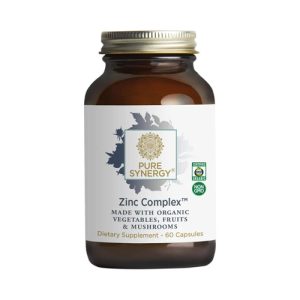 3. Zinc — this is a trace mineral so you only need small amounts daily. If you have a varied diet, you should be meeting the daily requirements of zinc. But when you have Covid, its always a good idea to supplement with zinc because it supports numerous immune functions of our body. Again, I always recommend whole-based-food supplements (those supplements derived from food rather than synthetic supplements)
3. Zinc — this is a trace mineral so you only need small amounts daily. If you have a varied diet, you should be meeting the daily requirements of zinc. But when you have Covid, its always a good idea to supplement with zinc because it supports numerous immune functions of our body. Again, I always recommend whole-based-food supplements (those supplements derived from food rather than synthetic supplements)
Here is my zinc supplement: https://amzn.to/3HqHc94
The advantage of using whole-based-food supplements, aside from saving your liver and kidneys, is that natural supplement’s absorption rates are much higher and are well tolerated by our bodies. Our bodies process synthetic vitamins differently. Some synthetics only have an absorption rate of 10% — that means your body isn’t really getting the full benefit of the vitamin because it cannot absorb the synthetic ingredient.
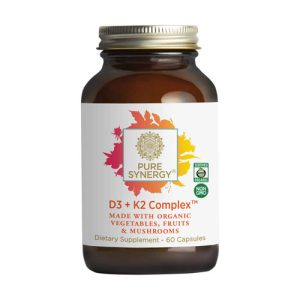 4. Vitamin D — this is one of the vitamins that you need to be careful with because overdosing is disastrous. Vitamin D is fat soluble so your body stores for long periods. The best way to take vitamin D is through food and sunshine. Early morning sunshine between 7 to 9am is optimal. If you can get out there everyday during the optimal times, and you live in a place with sufficient sunlight, then you don’ need to supplement with Vitamin D. If you are sick in bed and have winter months, then its best to supplement with a whole-food-based supplement.
4. Vitamin D — this is one of the vitamins that you need to be careful with because overdosing is disastrous. Vitamin D is fat soluble so your body stores for long periods. The best way to take vitamin D is through food and sunshine. Early morning sunshine between 7 to 9am is optimal. If you can get out there everyday during the optimal times, and you live in a place with sufficient sunlight, then you don’ need to supplement with Vitamin D. If you are sick in bed and have winter months, then its best to supplement with a whole-food-based supplement.
Here is what I use: https://amzn.to/3kzqDyL
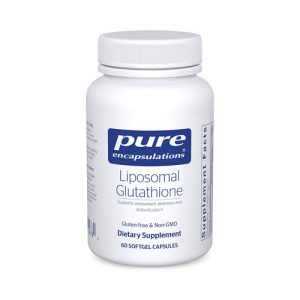 5. Liposomal Glutathione — one of the most important antioxidants found in our body. It combats free radicals. Our bodies can naturally make glutathione but as we get older, the body’s ability to create glutathione diminishes so its a good idea to supplement with glutathione when dealing with covid. Here is one of the studies of the effectiveness of glutathione on covid-cars-2
5. Liposomal Glutathione — one of the most important antioxidants found in our body. It combats free radicals. Our bodies can naturally make glutathione but as we get older, the body’s ability to create glutathione diminishes so its a good idea to supplement with glutathione when dealing with covid. Here is one of the studies of the effectiveness of glutathione on covid-cars-2
https://www.mdpi.com/2076-3921/9/10/914/pdf (this a PDF and will automatically download to your computer, super long read — it discusses the history of covid, the types of glutathione and different viruses)
Excerpts from the research:
It has been shown in influenza virus infection that GSH (glutathione) depletion is pivotal for the folding and maturation of the viral glycoprotein haemagglutinin (HA) and therefore for viral replication [101]. This has led to speculation that viruses manipulate the function of NRF2 [102].
GSH(glutathione) deficiency has been associated with a more severe clinical manifestation of coronavirus. One article with a small number of cases shows decreased plasma GSH is associated with more severe presentation of disease. Levels of GSH and ROS were measured in 4 patients with laboratory confirmed COVID-19. In the patients with higher baseline levels of GSH, there was an observed decrease in ROS, and these patients had a shorter course of illness. Decreased GSH was associated with increased ROS and more severe symptoms [35]. The role of GSH depletion in COVID-19 is a topic which warrants further analysis
Based on evidence provided from previous studies conducted by our laboratory, it can be reasonably concluded that administration of liposomal glutathione would be particularly beneficial in high-risk COVID-19 patients, such as those who are also suffering from type II diabetes mellitus or those who are co-infected with HIV or M. tb. Liposomal glutathione has been demonstrated to be able to augment Th1 cytokine response in patients suffering from HIV and M. tb infections [58]. Intracellular GSH concentration in erythrocytes is shown to be diminished in patients with type II diabetes [129]. Thus, we would expect these high-risk or immunocompromised populations to benefit in particular from liposomal GSH supplementation
I have to mention, Covid attacks your lungs and it feels like your lungs are on fire. As soon as I started supplementing with Liposomal Glutathione, within the next day, I felt my lungs relax and I could finally take a deep breath and wasn’t as out of breath as the previous days.
This is the only non-wholefood supplement that I take and recommend: https://amzn.to/3ZWCAP7
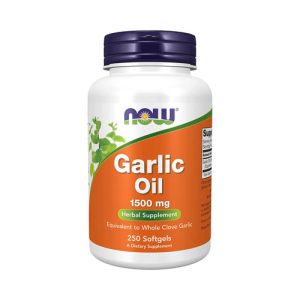 6. Garlic (allicin) — don’t sleep on garlic! My Dad’s one and only supplement is garlic. He is frikkin’ 78 years old and has the worst diet in the world but he’s still alive and healthy, which is crazy. I never thought anything of garlic until I started doing my research. Get to know the benefits of garlic, here: https://www.healthline.com/nutrition/11-proven-health-benefits-of-garlic#TOC_TITLE_HDR_7
6. Garlic (allicin) — don’t sleep on garlic! My Dad’s one and only supplement is garlic. He is frikkin’ 78 years old and has the worst diet in the world but he’s still alive and healthy, which is crazy. I never thought anything of garlic until I started doing my research. Get to know the benefits of garlic, here: https://www.healthline.com/nutrition/11-proven-health-benefits-of-garlic#TOC_TITLE_HDR_7
https://www.frontiersin.org/articles/10.3389/fimmu.2020.570122/full. (Includes other food supplements aside from garlic)
Excerpt from this article:
Garlic is a well-known plant/ herb classified under Allium (onion) family and has been used from ages for its several nutraceutical properties. The predominant thiosulfinate in fresh garlic extract identified as allicin, has shown a number of health benefits due to its anti-inflammatory, antioxidant and antiviral properties. Allicin suppresses the inflammation via inhibiting the TNF-α induced expression levels of IL-1β, IL-8, IP-10, and IFN-γ and also through suppression of degradation of NF-κB inhibitory protein IκB in intestinal epithelial cells (65). It inhibits inducible NO nitric oxide synthase expression in activated macrophages (66, 67). Several garlic associated compounds have found to possess a strong viricidal activity against a wide range of viruses including parainfluenza virus type 3, human rhinovirus, herpes simplex virus (HSV)-1, HSV-2, and vesicular stomatitis virus (VSV). Some of the garlic compounds that show viricidal activity are ajoene, allicin, allyl, methyl thiosulfinate and methyl allyl thiosulfinate (68, 69). Most of the above-mentioned functional effects were observed at 200 ng/ml concentrations. Studies also have found that only fresh samples with no processing such as heat induction or drying were successful to induce most of the biological activities of garlic (70). Therefore, fresh garlic extract may be useful as a prophylactic against COVID-19.
Here is what I take: https://amzn.to/3J9n4JV
I’ve been taking garlic for over a year now and will probably be taking it until I die, like my Dad!
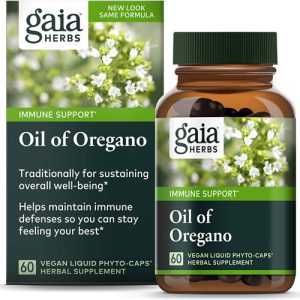 7. Oil of Oregano (Carvacrol) — a natural antibiotic and powerful antioxidant. Get to know the benefits of Oil of Oregano, here: https://draxe.com/essential-oils/oregano-oil-benefits/
7. Oil of Oregano (Carvacrol) — a natural antibiotic and powerful antioxidant. Get to know the benefits of Oil of Oregano, here: https://draxe.com/essential-oils/oregano-oil-benefits/
https://www.frontiersin.org/articles/10.3389/fpls.2020.601335/full
Excerpts from the study:
In addition, carvacrol also showed strong anti-inflammatory and antioxidant properties, which could be beneficial in the cure of diseases associated with enhanced oxidative stress along with inflammatory and altered immune status (Khazdair et al., 2018). Adaptive immune responses (Giamarellos-Bourboulis et al., 2020; Kuri-Cervantes et al., 2020; Liao et al., 2020), mainly of T cells (Giamarellos-Bourboulis et al., 2020; Mathew et al., 2020), showed a significant role in the infection of SARS-CoV-2, similar to the infection of respiratory diseases. Carvacrol has been shown to reduce the transcription factors of TH cell-related cytokines in ovalbumin immunized mice, thus suppressing the antigen-specific immune response, this indicates the potential of carvacrol to ameliorate the critical immune responses ascribed to the over activation of T-cells
Numerous studies have shown that the anti-inflammatory activity of carvacrol, derivatives of carvacrol, and plants containing a high amount of carvacrol in LPS-induced macrophages or monocytes or eosinophils, inhibit proinflammatory cytokines, inflammatory mediators, iNOS and COX-2, the production of NO and prostaglandin E2, and CD18 frequency on human lymphocytes (Lima Mda et al., 2013; Damasceno et al., 2014; Gholijani and Amirghofran, 2016; Li et al., 2018; Somensi et al., 2019). The hepatoprotective effect of carvacrol was observed in D-galactosamine-induced hepatotoxicity in rats. Carvacrol has been found to reduce CYP2E1 and enhance PPAR-α expression in alleviating liver damage (Aristatile et al., 2014). Carvacrol was also found as a COX-2 suppressor and PPAR-γ activator. Carvacrol has been shown to suppress the LPS induced mRNA and protein expression of COX-2 in human macrophage-like U937 cells, indicating that carvacrol ameliorates the expression of COX-2 via its agonistic effect on PPAR-γ (Hotta et al., 2010).
Carvacrol may also maintain the immune system balance through its role in immunomodulation (Butt and Sultan, 2010). Hence, carvacrol could be beneficial for limiting the orchestrated immune-inflammatory cascade in COVID-19.
Conclusion of the study:
Carvacrol as a potent antioxidant and immunomodulator may enhance the host cellular immunity against infections. Carvacrol’s capability in interfering with ACE2 receptors in the host, along with its antiviral properties due to its interaction with viral protease and antibacterial properties further strengthen the candidature of carvacrol in viremia and secondary infections, which eventually lead to complications and fatal outcomes. This review highlight the pharmacological principles and observations outlined in published studies, which plausibly suggest possible anti-inflammatory, antiviral, and immunomodulatory properties in context to COVID-19.
This is the Oil of Oregano that I take and recommend: https://amzn.to/3D9KScS
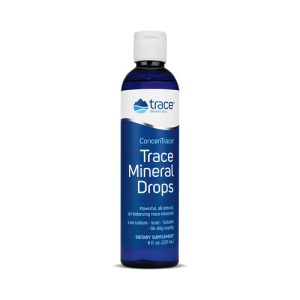 8. Trace Minerals or Mineral Water — when I have covid, I only drink mineral / spring water for its mineral content. Spring water with its macro and trace mineral content will replenish the minerals your body needs in order to function optimally. Here are all the essential trace minerals: iron, manganese, copper, iodine, zinc, cobalt, fluoride and selenium. High quality mineral water is rich in both macro and trace minerals that are highly absorbed by our bodies.
8. Trace Minerals or Mineral Water — when I have covid, I only drink mineral / spring water for its mineral content. Spring water with its macro and trace mineral content will replenish the minerals your body needs in order to function optimally. Here are all the essential trace minerals: iron, manganese, copper, iodine, zinc, cobalt, fluoride and selenium. High quality mineral water is rich in both macro and trace minerals that are highly absorbed by our bodies.
I don’t normally like bottled water but when Im sick, I make an exception. My favorites are Evian and Icelandic — 100% recycled, bpa-free and carbon neutral as well so that makes me feel a little better.
Icelandic NSF* Test Report can be found here: https://cdn.shopify.com/s/files/1/0289/0132/files/NSF_analysis_Source_water_2021.pdf?v=1622737124
Evian NSF* Test Report can be found here: https://www.evian.com/en_us/wp-content/themes/evian/assets/report_files/evian_Bottle_Water_Quality_Report_2020.pdf
*NSF Report lists water quality test results for over 175 substances including inorganic, organic substances.
If you prefer using Trace Minerals on distilled water, my sister swears by this trace mineral supplement: https://amzn.to/3J5qHR9
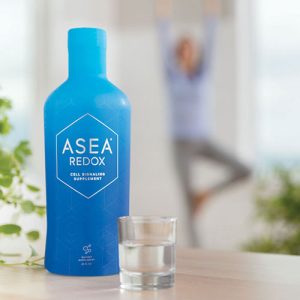 9. ASEA —cell regeneration or what’s known as “redox signaling molecules” — I strongly believe that I’ve healed very quickly from Omicron because of ASEA. Within 3-4 days I was feeling so much better. Im on day 14 and no longer have symptoms. ASEA has also helped my asthma and allergic rhinitis. I no longer have allergies, which is shocking to me. We are at the very early age of understanding redox signaling but here are some positive notes from research papers.
9. ASEA —cell regeneration or what’s known as “redox signaling molecules” — I strongly believe that I’ve healed very quickly from Omicron because of ASEA. Within 3-4 days I was feeling so much better. Im on day 14 and no longer have symptoms. ASEA has also helped my asthma and allergic rhinitis. I no longer have allergies, which is shocking to me. We are at the very early age of understanding redox signaling but here are some positive notes from research papers.
https://www.mdpi.com/journal/cells/special_issues/Redox_Signaling_Molecular_Mechanisms
Excerpts on Redox Signaling
In fact, redox signaling is required for numerous cellular processes, as indicated by the role of ROS in proper cellular differentiation, tissue regeneration, and prevention of aging. While there is a large body of research demonstrating the general effect of oxidative stress on signaling pathways, less is known about the initial and direct regulation of signaling molecules by ROS. Recently, it has also been argued that redox signaling is also crucial in regulating signaling pathways that control various disease states, including tumorigenesis, automimmunity, neurodegenerative diseases, and loss of tissue regeneration with age.
This issue will highlight recent advances in our understanding of the molecular mechanisms underlying redox signaling, how perturbations of redox signaling cause various diseases, and how these insights may lead to novel therapeutics. We are seeking submissions in all areas of redox signaling.
https://www.cell.com/current-biology/comments/S0960-9822(14)00326-1
Excerpts on Redox Biology and Redox Signaling
Oxidative stress refers to elevated intracellular levels of reactive oxygen species (ROS) that cause damage to lipids, proteins and DNA. Oxidative stress has been linked to a myriad of pathologies. However, elevated ROS also act as signaling molecules in the maintenance of physiological functions — a process termed redox biology. In this review we discuss the two faces of ROS — redox biology and oxidative stress — and their contribution to both physiological and pathological conditions. Redox biology involves a small increase in ROS levels that activates signaling pathways to initiate biological processes, while oxidative stress denotes high levels of ROS that result in damage to DNA, protein or lipids.
An understood mechanism of redox signaling involves H2O2-mediated oxidation of cysteine residues within proteins [5]. Cysteine residues exist as a thiolate anion (Cys–S-) at physiological pH and are more susceptible to oxidation compared with the protonated cysteine thiol (Cys–SH) [6]. During redox signaling, H2O2 oxidizes the thiolate anion to the sulfenic form (Cys–SOH), causing allosteric changes within the protein that alter its function. The sulfenic form can be reduced to thiolate anions by the disulfide reductases thioredoxin (Trx) and glutaredoxin (Grx) to return the protein function to its original state
https://www.ncbi.nlm.nih.gov/pmc/articles/PMC4048798/
Excerpts on Redox Signaling
Redox signaling is part of the normal physiology of all cells, including flow stimulated growth of endothelial cells, and plays a significant role in pathophysiological responses such as occur in ischemia/reperfusion injury, as well. The purpose of this review is to provide an overview of the chemistry of redox signaling while other reviews in this special issue will address how redox signaling is relevant to cardiovascular physiology. We will not attempt to provide a compendium of the increasing number of signaling pathways in which redox plays a role. Also, we cannot, in this limited space, provide a comprehensive coverage of all aspects of redox signaling. But, it is important to note that redox signaling is not strictly limited to the types of reactions that we will detail here
I have no simple explanation for redox signaling except a personal experience of, “it works” and I’ve never felt better in my entire life. Some of the things that I’ve felt since I started taking ASEA
- I’ve started running/sprinting when walking with my dog, I could never sprint before because my knees, ankles or asthma
- I can go through the entire day without napping. I usually nap at around 5pm because Im exhausted but with ASEA, I have the same energy at 9am that I do at 5pm.
- I’ve stopped taking so many supplements. ASEA is expensive but I’ve stopped taking all the other supplements in my Arsenal because I dont need them anymore. It feels like ASEA has turned back time for my body.
- Getting enough sleep. I normally wake up in the middle of the night and can’t get back to sleep but now, Im sleeping through the night.
- It’s completely gotten rid of my carpal tunnel syndrome. I had issues typing because my right wrist would hurt so much, thats now not an issue. I no longer have pain on the wrist or lower back.
- No more allergic rhinitis. I actually cried when I realized this because I’ve had this my entire life.
Please keep drinking the small cup of ASEA first thing in the morning and last thing at night (on an empty stomach). You will start feeling so much younger and you will eventually not need to take so many other supplements that could be harming your liver. For me, it took about 3 months for all these things to happen and its all very subtle — you wont feel it happening. It’s going to slowly happen. If you have a lot of ailments, you need to up your dose of ASEA. During Omicron, I upped my dose to a bottle per day then after 3 days, half a bottle per day.
You can buy ASEA here.
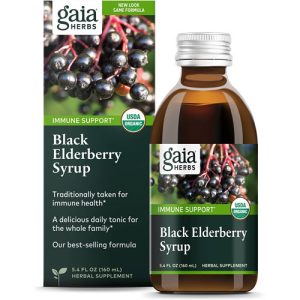 10. Elderberry Syrup — packed with vitamins and antioxidants and truly help your immune system against inflammation.
10. Elderberry Syrup — packed with vitamins and antioxidants and truly help your immune system against inflammation.
https://pubmed.ncbi.nlm.nih.gov/30670267/
Excerpts:
Black elderberry (Sambucus nigra) has been used to treat cold and flu symptoms, but there are no large-scale studies or meta-analyses. This meta-analysis quantifies the effects of elderberry supplementation and evaluates moderators including vaccination status and the underlying pathology. This analysis included a total of 180 participants and evaluates moderators such as vaccination status and cause of the upper respiratory symptoms. Supplementation with elderberry was found to substantially reduce upper respiratory symptoms.
This is the brand I recommend: https://amzn.to/3HoUuTq
…and that’s it. Please note that all the amazon links on this page are under an affiliate program. Also, none of my statements have been verified by the FDA. The information you find here is not meant to treat, diagnose, cure or prevent any disease.
Hopefully, this list was helpful — please let me know if you have any questions.

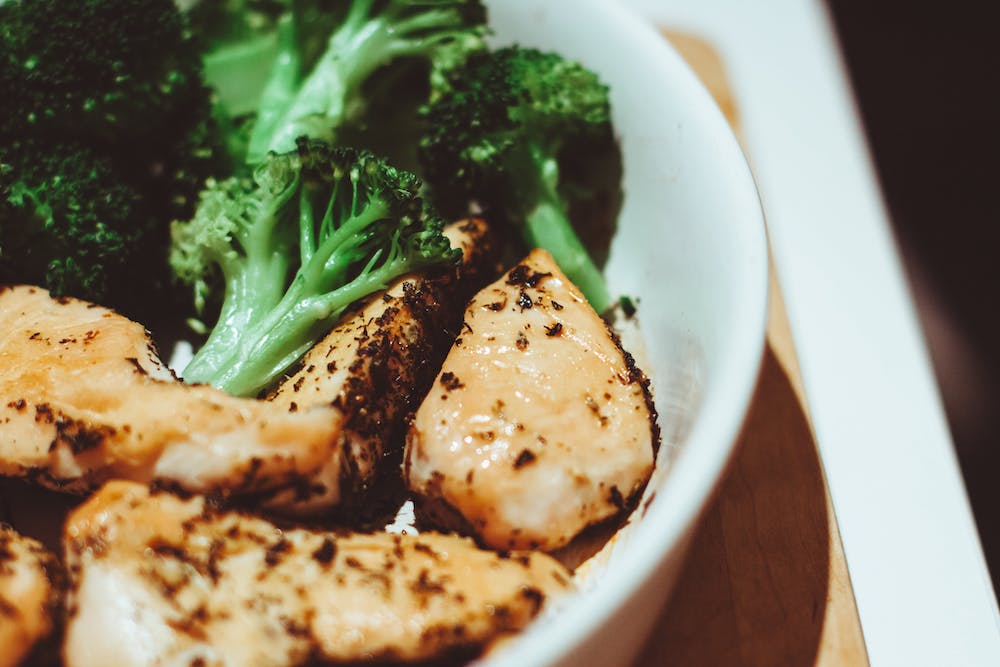
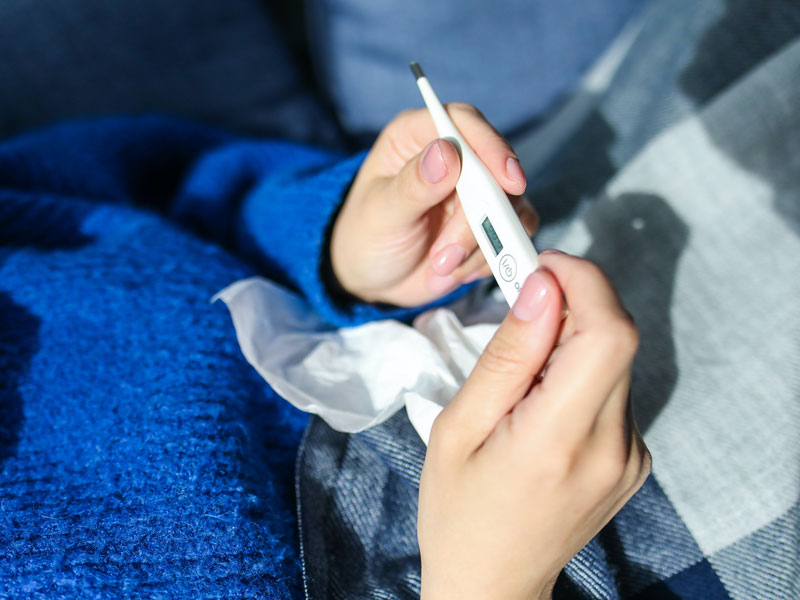

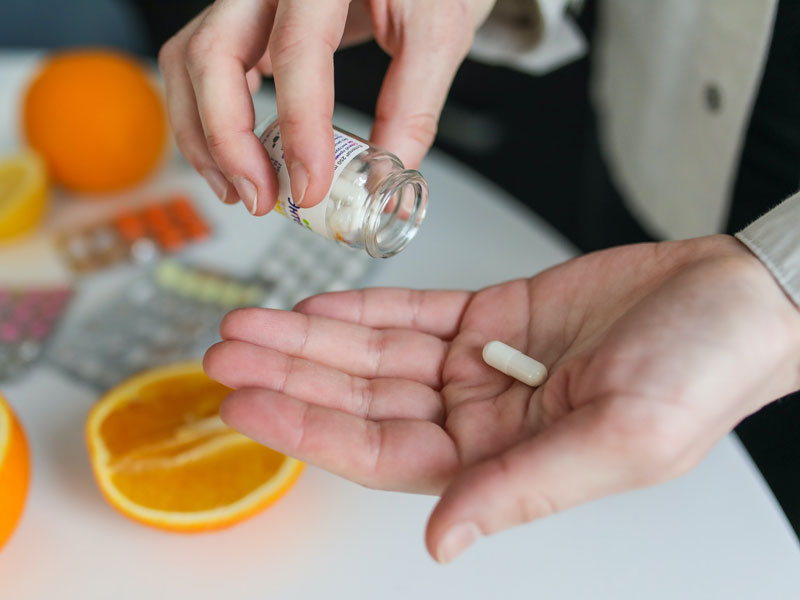
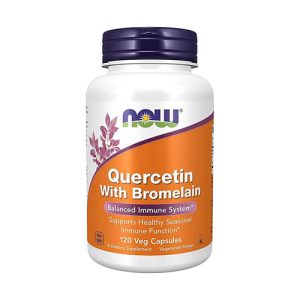 Quercetin with Bromelain
Quercetin with Bromelain ASEA
ASEA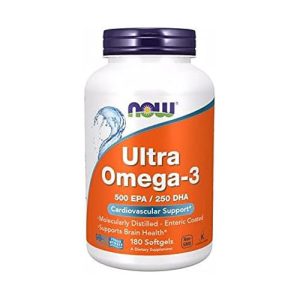 Omega-3s or fish oil
Omega-3s or fish oil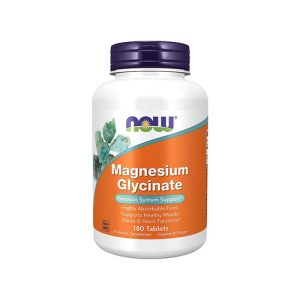 Magnesium
Magnesium Turmeric
Turmeric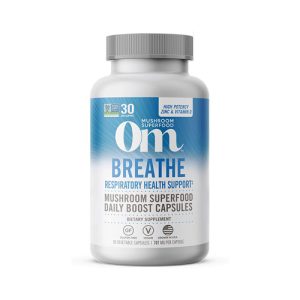 Reishi and Cordycep Mushrooms
Reishi and Cordycep Mushrooms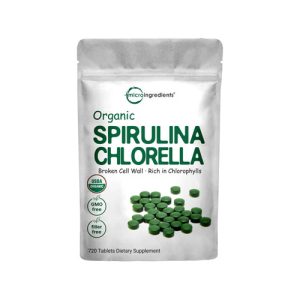 Spirulina and chlorella
Spirulina and chlorella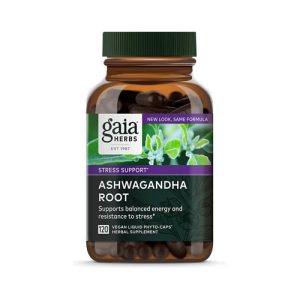 Ashwaganda
Ashwaganda